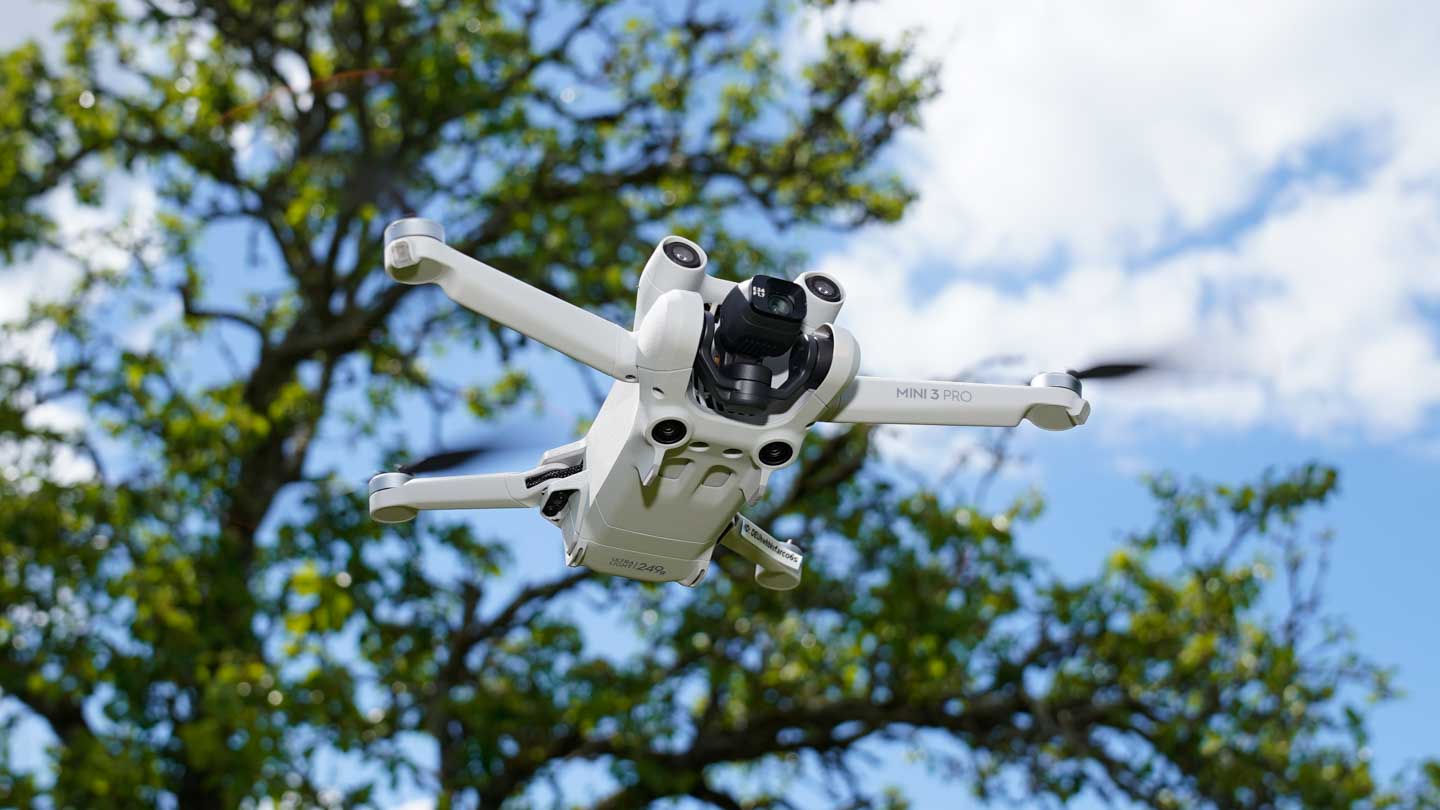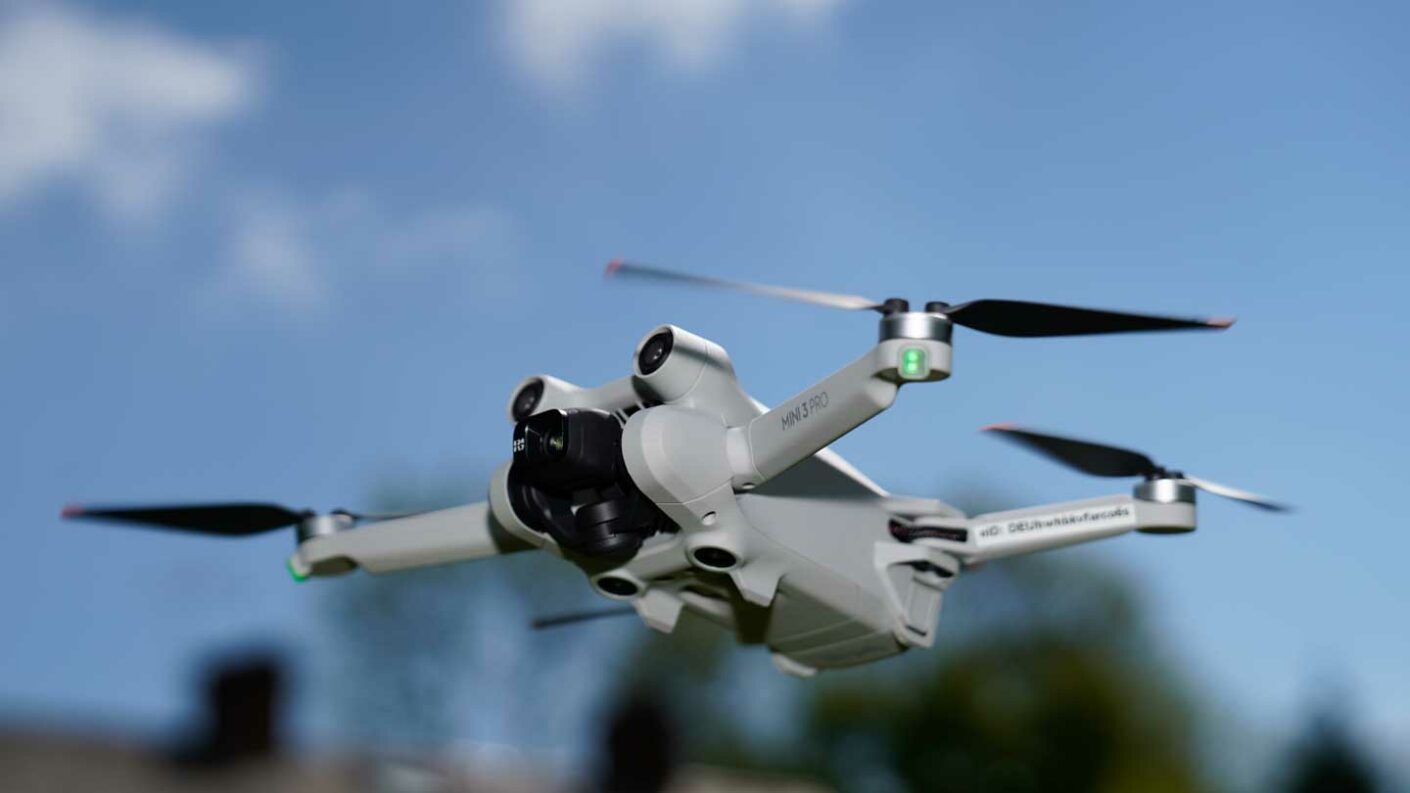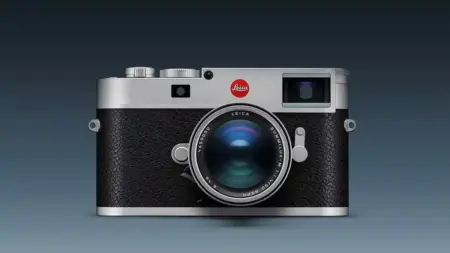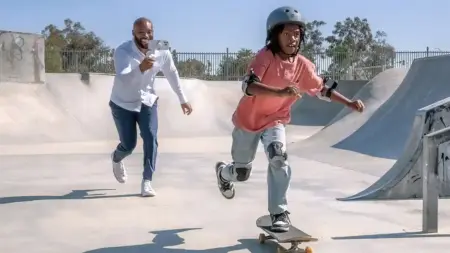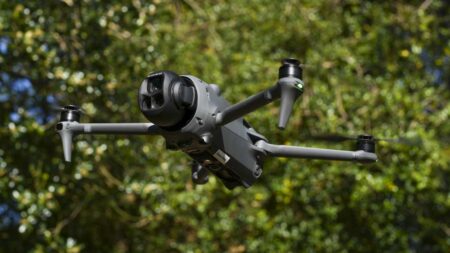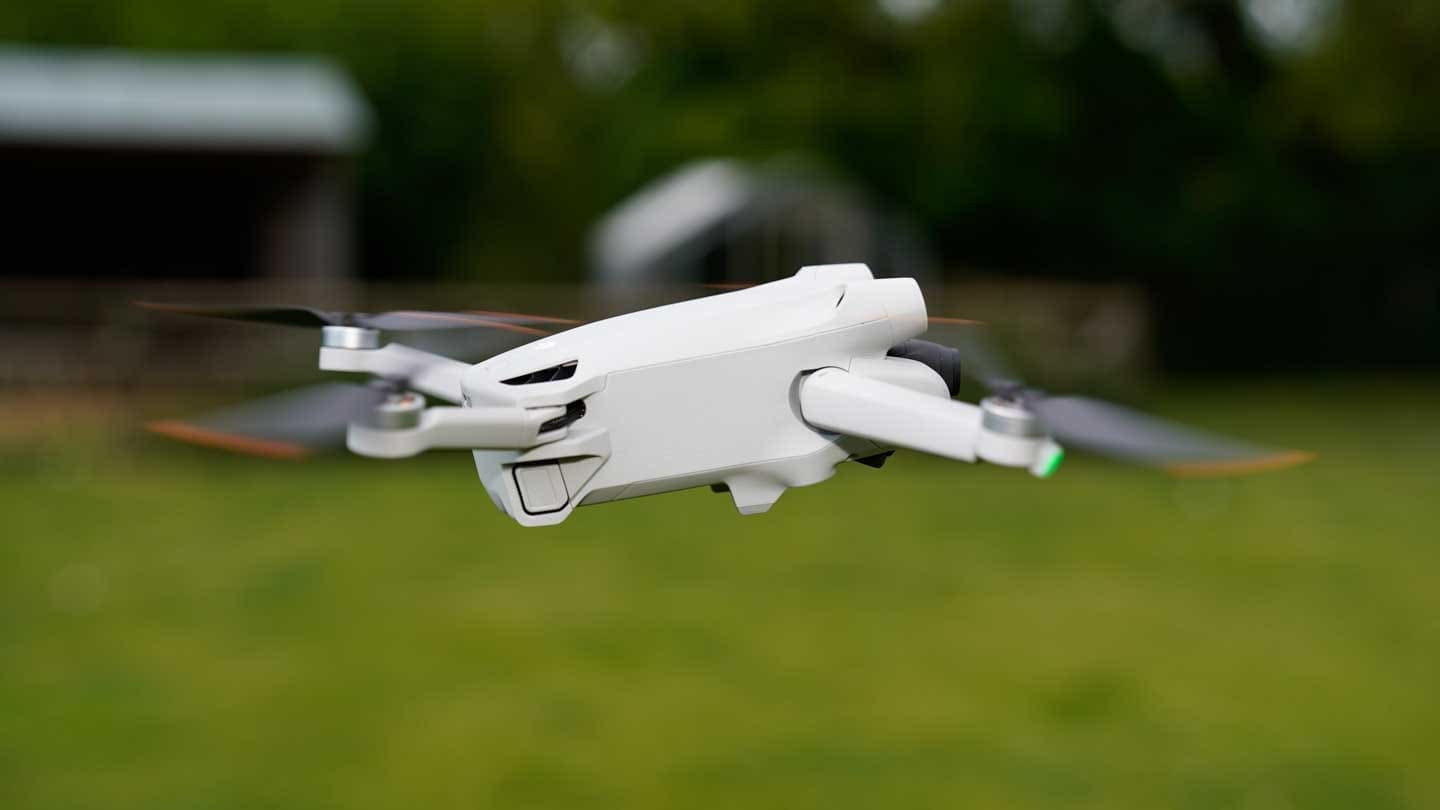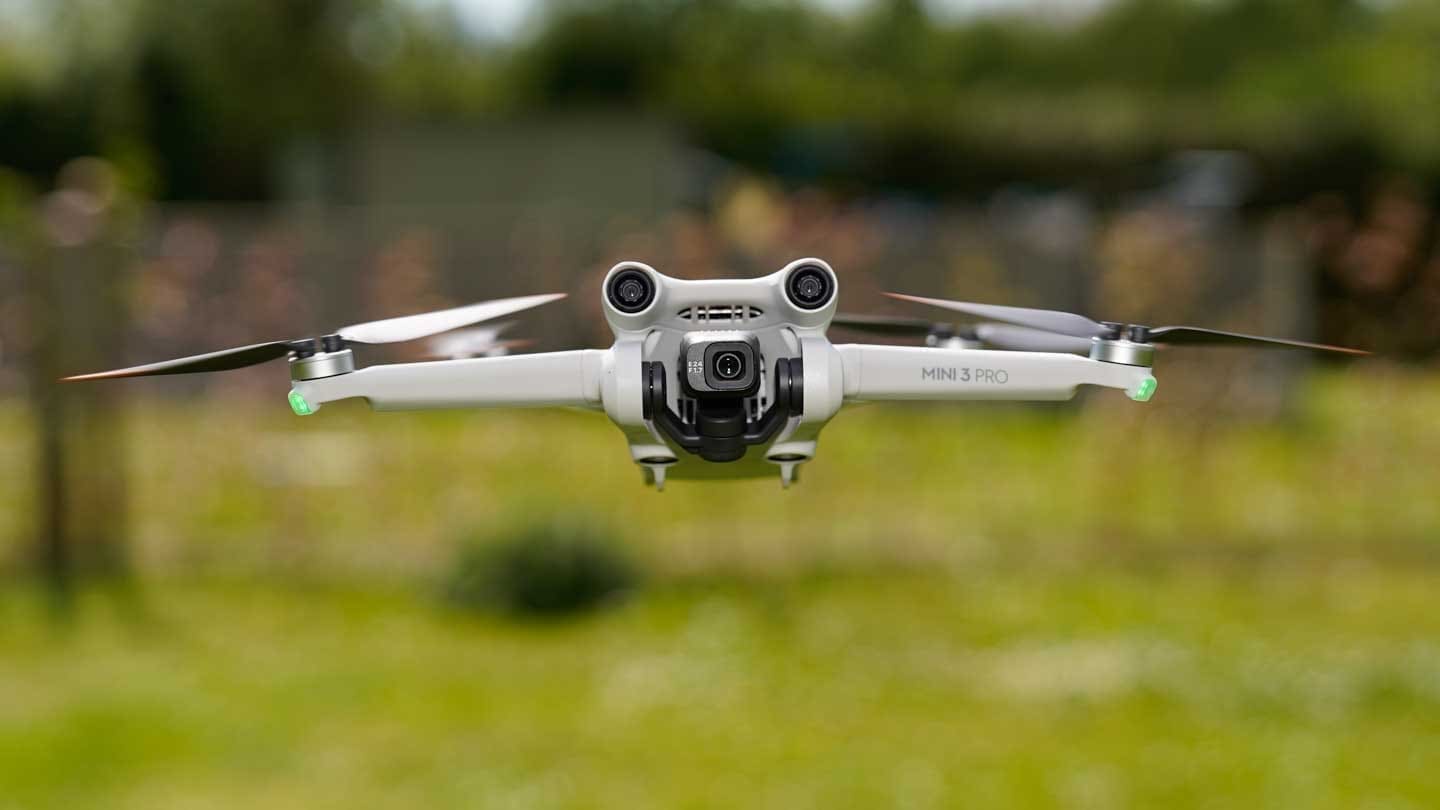Whenever I get a new drone, the first check is to see how it flies in the standard flight mode; in the case of the DJI Mini 3 Pro, as with almost all recent DJI drones, that’s N (Normal).
The weather conditions varied greatly during the test of the DJI Mini 3 Pro, with most days being cloudy with sunny spells. What was consistent was the speed at which the DJI Mini 3 Pro could pick up the satellites and complete its automated boot-up and check process.
Once these checks are complete, the app or Smart Controller automatically connects you to the app. On first running, it asks if you want to run through the pre-flight checks, and it’s recommended that you always follow the checking procedure. It only takes a couple of minutes and will help to ensure a safe flight.
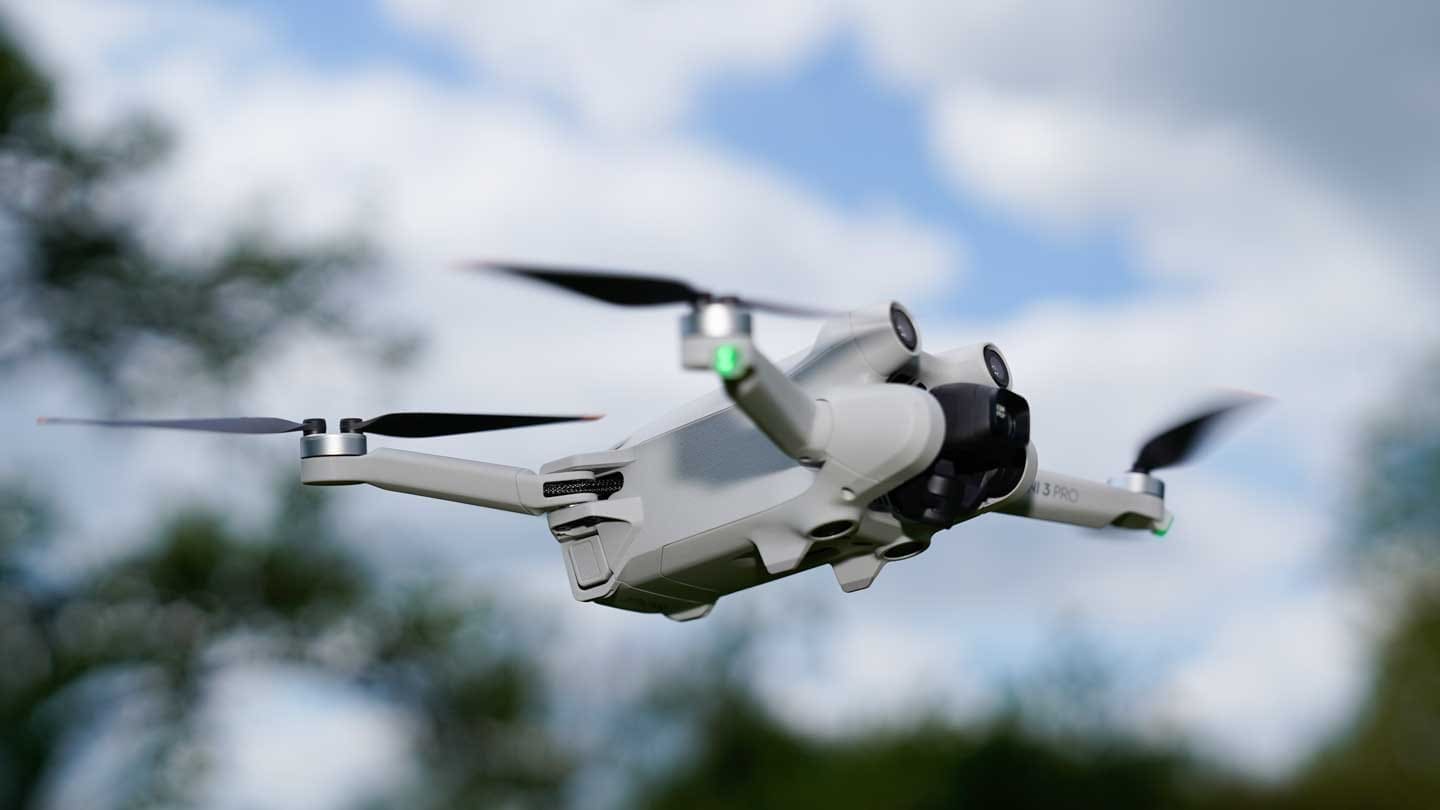
All checks done, and it’s time to run through the standard flight checks; take off, and the first landing are solid, with the small craft lifting clear of the ground and then settling back down. You can either use the two sticks of the controller pulled towards the bottom middle or use the take-off icon on the smart controller’s screen.
One thing to note about the Mini 3 Pro is that a take-off mat is essential. These should always be used anyway, but the front props have little clearance from the ground, so they need a flat surface for the take-off. Even in a recently mown field, it can be tricky to find a surface that is flat enough!
The DJI Smart Controller effectively mimics the DJI Fly App, with the functions and features that appear on the app also appearing on the Smart Controller.
Like the app, you can connect the Smart Controller to a local Wifi signal to receive updates ensuring that it stays up to date with the latest flight information, features and software and this is all easy to do.
In common with the rest of the DJI range of drones, the Return to Home (RTH) position is set as part of the powering up the process, so as the pilot, there is nothing that you have to worry about on that front. Testing the RTH feature by pushing the physical button on the controller first and then the touch button on the app showed in both cases the drone sedately return to its take-off point. Likewise, flying the DJI Mini 3 Pro so that the battery is almost exhausted automatically activates the RTH and flies back to the take-off position.
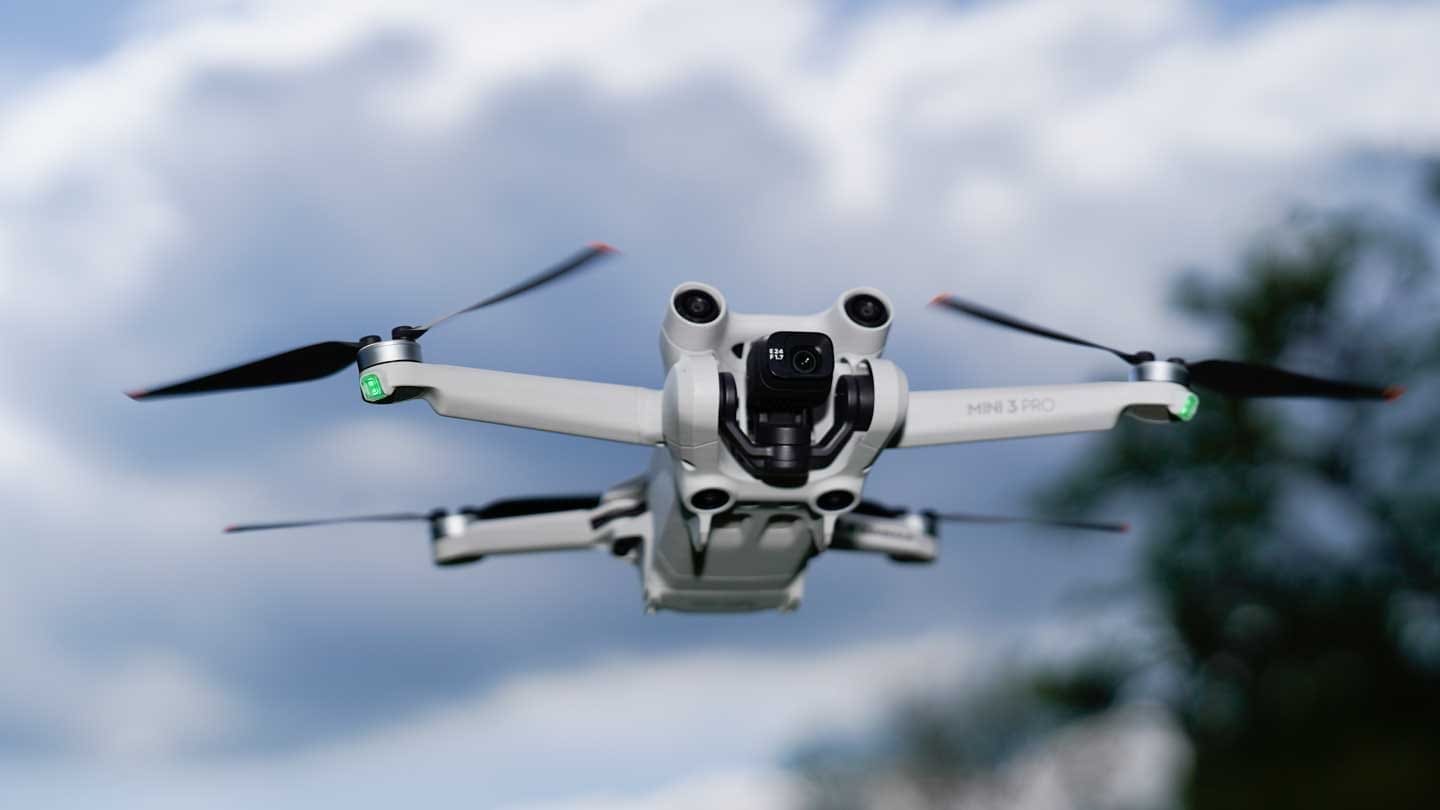
Up in the air and the Mini 3 Pro is well balanced with the position of the props enabling easy and smooth control. I did find that the pre-set speed for the pan of the craft was a little slow in N mode and adjusted this through the app.
Like its predecessor, the DJI Mini 2, the slightest wind would influence the craft’s position in flight, especially when hovering.
However, the quality of the gimbal stabilisation is excellent, and the small camera captures a perfectly smooth and sharp image when required.
Quickly running through the other two flight settings; Sport (S) is great fun, and the Mini 3 Pro can pick up some speed with the small motors having more than enough power to stop it from drifting too far when turning through fast corners. It’s also incredibly controllable in the mode and great fun. However, I’m not sure how the lightweight craft would fair if it hit the ground at top speed.
Cine (C) is far more sedate and enables you time to plan your shot. In this mode, the control is easy, and it is ideal for long panning shots where you need absolute accuracy.
It’s all well considered and easy to use.
One of the features that make the DJI drones stand out is the sensing system. This has been greatly enhanced over the previous model with front, rear and bottom sensors.
Before you go testing the efficiency of these sensors against a brick wall or similar, it’s worth noting that they only work when the small craft is going at 10m/s or less. Essentially they work for N and C modes but not for S mode.
These sensors work relatively well; they avoid solid objects but not all shrubs, bushes and trees. I will note here that our review samples are pre-production and there were firmware updates coming thick and fast that would activate and deactivate some features through the test. While the front and bottom sensors worked and tested fine, the rear sensors didn’t quite kick in, in the same way.
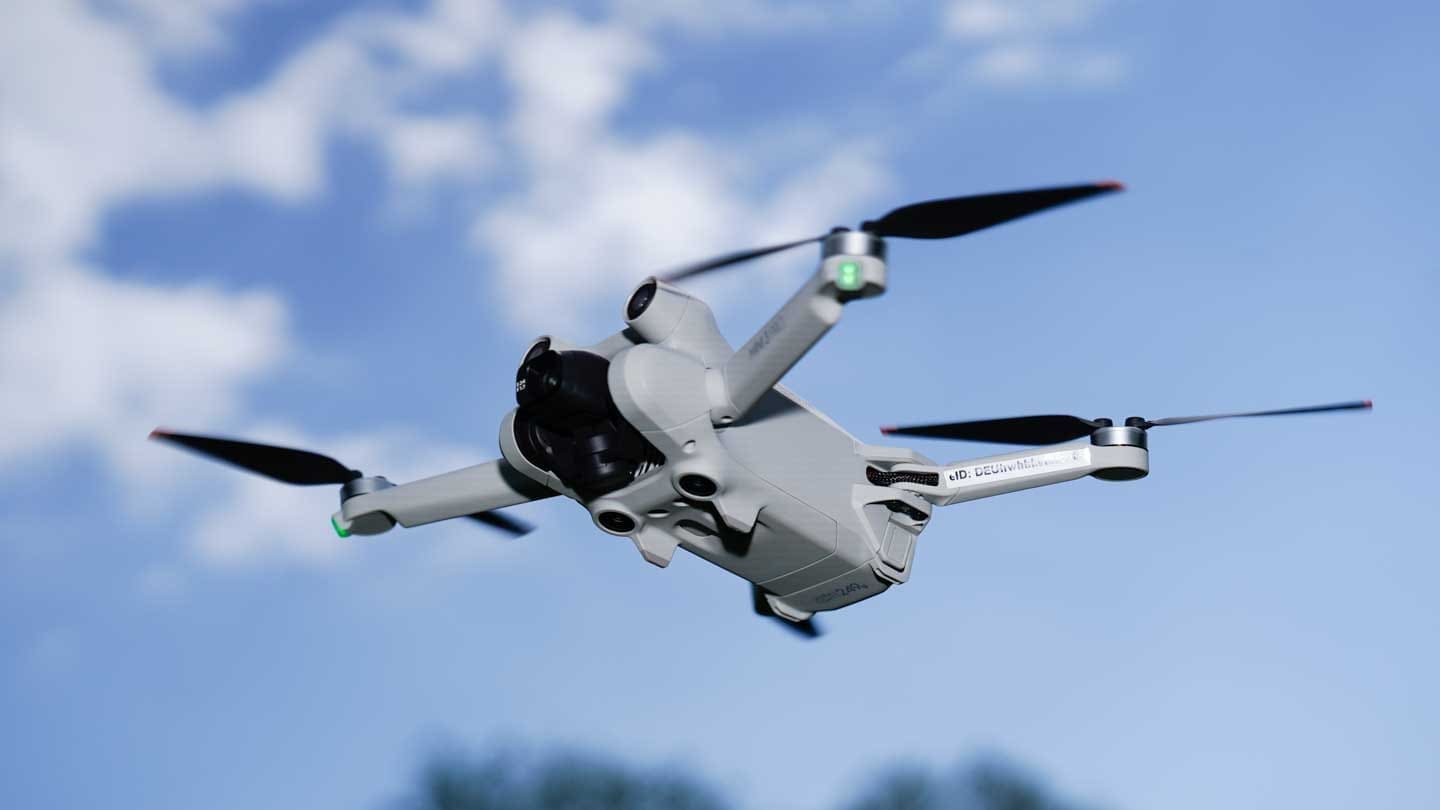
As with other avoidance systems the distance of the sensors can be set and is 6m as default.
Incredible image quality.
Starting with the stills image quality. Firstly as with most DJI drones, you can shoot in Jpeg and raw file formats. Raw files are saved as .DNG with a typical image file size of 25MB, while the Jpegs are around 6MB.
The quality of the images is an exception for the camera’s size and captured at 12 rather than the full 48MP. Looking at the aerial shots taken through the test and the level of detail is exceptional. However, due to the present firmware checking these images out and they only seem to be being captured at 12MP – this should be updated soon with the next round of firmware updates and I’ll update you with more then.
Compare these images to those from the previous Mini models, and the quality is a world apart. Like the DJI Air 2, these images take a quality leap in every way. One of the most interesting aspects of the images is the vast dynamic range. The small sensor captured all that detail by taking one of the DNG files, pushing the shadows, and highlights you can really see the range of data captured by the small sensor.
Outstanding video quality from the DJI Mini 3 Pro
When I looked at the Mini 2 a couple of years ago, I was impressed by the video quality. It was a huge leap up from the compact rule-bending Mini.
The Mini 3 Pro shows that DJI has really developed the format, and the new camera has specifications that rival the Air 2s. This new camera is far more closely related to the one that features on the DJI Air than the one on the previous DJI Mini.
Firstly the quality of the stabilisation is excellent, especially when you consider the small drone’s light weight, as it is far more likely to be buffeted around by the wind, especially at altitude. Thankfully, thee three-axis gimbal does an excellent job but there are limits.
When it comes to the actual video quality, as with the stills, the dynamic range of the footage is exceptional. Looking at the detail of the shots, there is very little to fault considering the price and level of the drone. The small camera balances exposure well through the test, and when used at low levels and heights.
What’s impressive is that when you compare the quality of footage from the Air 2 against the Mini 3 Pro, there does seem to be very little difference.
The clarity of the image is good, with well-balanced colour and tone. The fact that the camera is capturing data at 150MB/s shows. In the slow-paced shots shot at 4k 60fps, the motion is smooth with no image break up or jerkiness in the motion.
Switching to 2.7k and 1080p, the footage’s quality is again excellent. The only issue that I had was that a 32GB MicroSD card would fill in the blink of an eye, far faster than I’m used to with this level of the drone.
While the Mini was aimed at beginners or those just wanting a hobby drone, the Mini 3 Pro is something completely different. This is a drone that fulfils many of the requirements that professional image creators have. It’s small, easy to use, unrestricted in use by aviation law, captures incredible stills and video has decent flight times and is relatively inexpensive.
If you want a drone for imaging then really the DJI Mini 3 Pro ticks almost every box.
